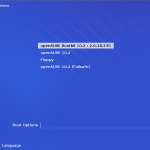Ever wonder what configuration variables lie withing the moodle code? Well you have the config.php file but that only tells you a small fraction of the available configuration variables. Why might you need to know this? Well it is interesting…
GL.IB.LY
Thoughts on security, computing, business and stuff!
Blog Archives
Deleting specific emails from the postfix mail queue
A week ago a development database server lost power, which is usually no big deal only that I have some reporting scripts that run every 5 minutes for each database. When these databases became unavailable they (the scripts) like to…
All configuration variables in Moodle code?
Sometimes Moodle introduces some nice new configuration variables and I like to make sure that I know what they are and where they are. So to begin my investigation without heading off to the web I use the following command…
Tagged with: cfg, configuration variables, grep, linux, moodle, moodle_19, one liners, sort
Posted in Uncategorized
Posted in Uncategorized
Adding a malicious system call to the Linux kernel – Rootkit

Introduction Today I am adding a malicious system call to the Linux kernel which will allow the caller to do something they cannot normally do in user mode. When attacking a Linux box our goal is usually to become root;…
Tagged with: computer security, kernel, linux, mssf, opensuse, rootkit, security, system call, virtual pc
Posted in Security
Posted in Security